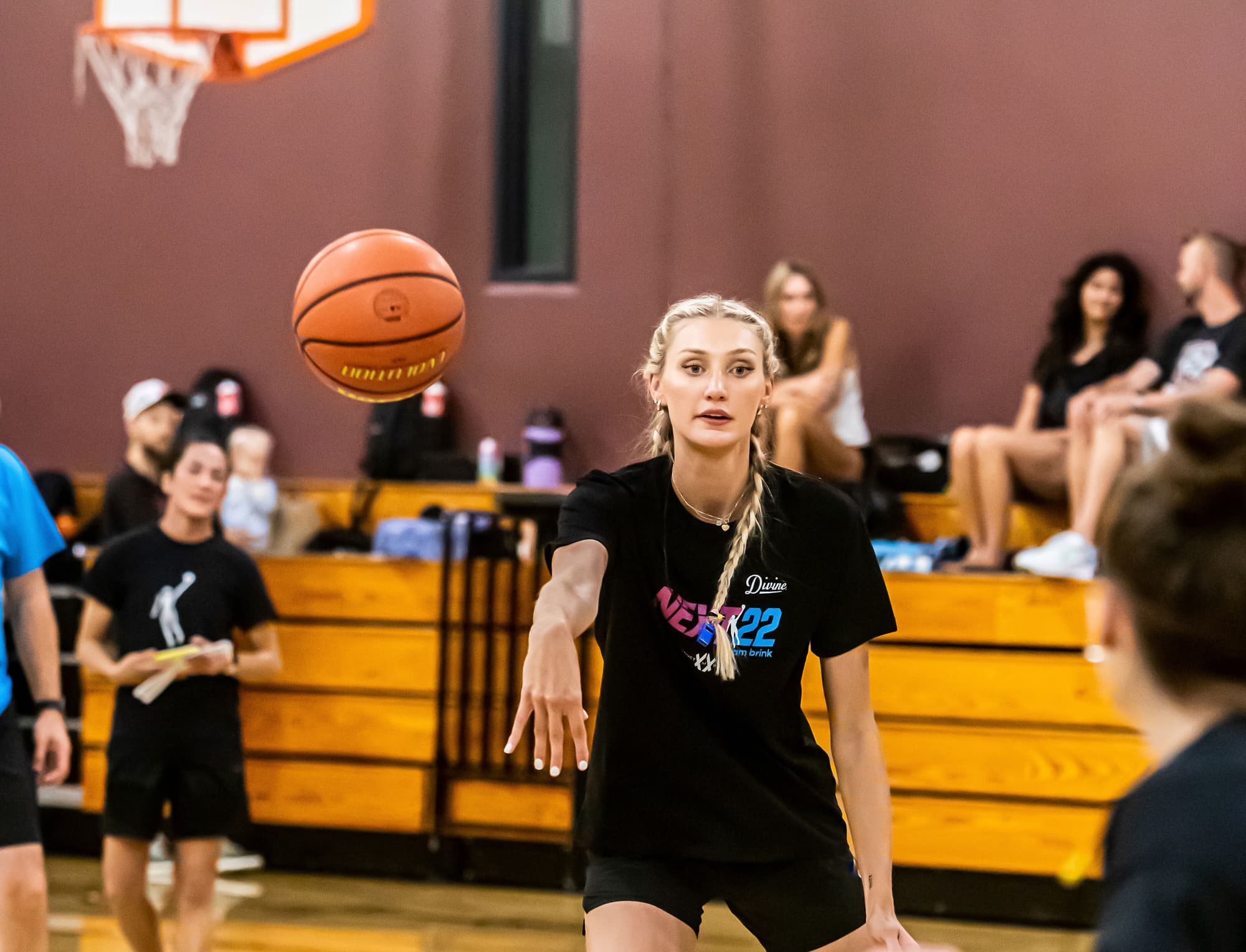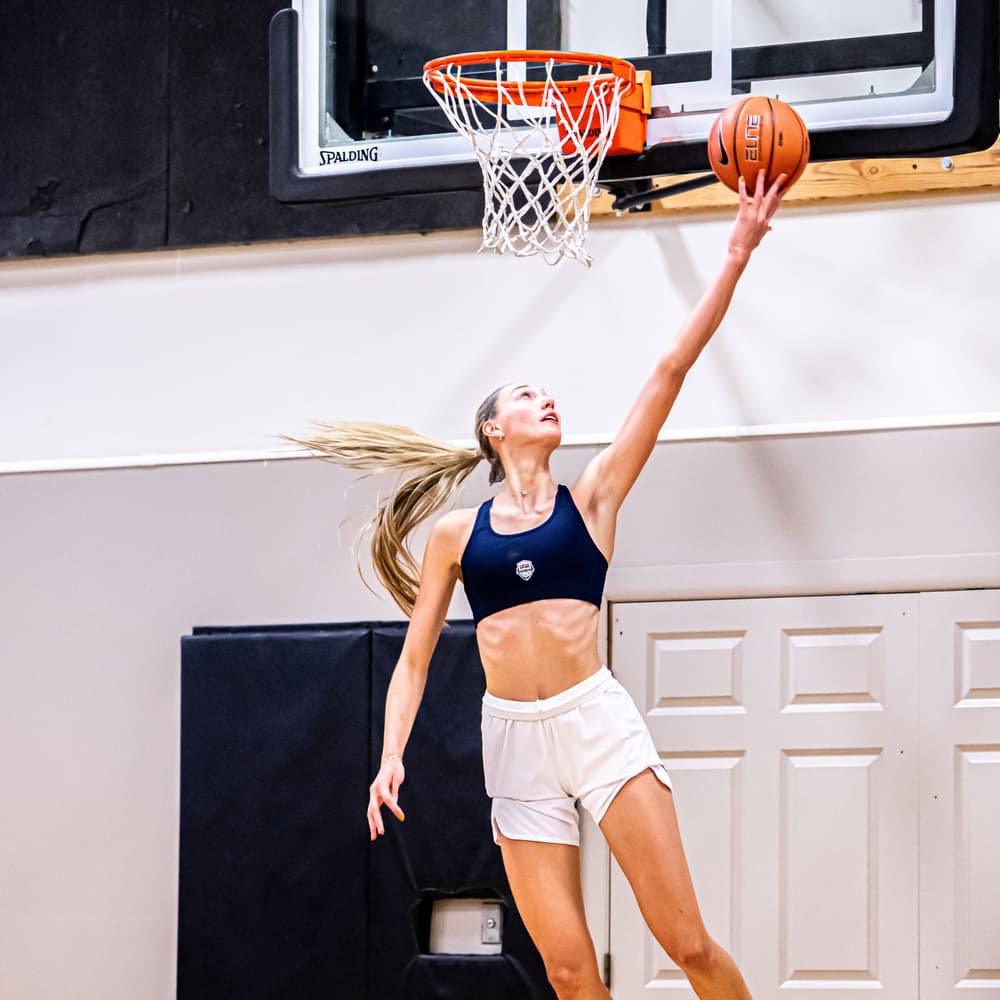Cameron Brink achieves visual freedom with the EVO implantable lenses
Basketball Player
Basketball Player

Vision struggles on and off the court
Cameron Brink, a star on the women’s basketball team of Stanford University, faced the daily struggles of glasses and contacts, impacting both her personal and professional life.

EVO ICL: the game-changer
Join her in experiencing the world with newfound clarity and confidence. For those on the fence about EVO ICL, Cameron passionately encourages,
"Talk to your eye doctor today. It's truly a life-changing procedure!"
Ready to embrace a life without the hassle of glasses and contacts? Discover the possibilities with EVO ICL. Call an EVO advisor today to schedule an appointment with an eye doctor near you, and embark on your own journey towards visual freedom!
Wichtige Sicherheitsinformationen
Die ICL ist für die Korrektur/Reduzierung von Kurzsichtigkeit bei Patienten im Alter von 21 bis 60 Jahren im Bereich von -0,5 D bis -20,0 D mit oder ohne Astigmatismus bis zu 6 D und für die Korrektur/Reduzierung von Weitsichtigkeit bei Patienten im Alter von 21 bis 45 Jahren mit einer Weitsichtigkeit im Bereich von +0. 5 D bis +16,0 D mit oder ohne Astigmatismus bis zu 6 D. Um sicher zu sein, dass Ihr Chirurg eine ICL mit der für Ihr Auge am besten geeigneten Stärke einsetzt, sollten Ihre Kurzsichtigkeit, Weitsichtigkeit und Ihr Astigmatismus mindestens ein Jahr lang stabil sein, bevor Sie sich einer Augenoperation unterziehen. Eine ICL-Operation kann Ihre Sehkraft ohne Brille oder Kontaktlinsen verbessern. Die ICL-Operation macht eine Lesebrille nicht überflüssig, selbst wenn Sie sie vorher nie getragen haben. Die ICL-Operation ist eine Alternative zu anderen refraktiven Eingriffen wie der laserunterstützten In-situ-Keratomileusis (LASIK), der photorefraktiven Keratektomie (PRK), und weiteren Korrekturen mittels Schnitt-Techniken oder anderen Mitteln zur Korrektur Ihrer Sehkraft wie Kontaktlinsen und Brillen. Die Implantation einer ICL ist ein chirurgischer Eingriff und birgt als solcher potenziell ernsthafte Risiken. Die folgenden potenziellen Komplikationen/Nebenwirkungen wurden im Zusammenhang mit refraktiven Eingriffen im Allgemeinen berichtet: zusätzliche Operationen, Kataraktbildung, Verlust des bestkorrigierten Sehvermögens, erhöhter Druck im Inneren des Auges, Verlust von Zellen auf der innersten Oberfläche der Hornhaut, Bindehautreizung, akute Hornhautschwellung, anhaltende Hornhautschwellung, Endophthalmitis (totale Augeninfektion), signifikante Blendung und/oder Lichthöfe um Lichter herum, Hyphaem (Blut im Auge), Hypopyon (Eiter im Auge), Augeninfektion, ICL-Verschiebung, Makulaödem, nicht reaktionsfähige Pupille, Pupillenblockglaukom, schwere Entzündung des Auges, Iritis, Uveitis, Glaskörperverlust und Hornhauttransplantation. Bevor Sie eine ICL-Operation in Erwägung ziehen, sollten Sie eine vollständige Augenuntersuchung durchführen lassen und mit Ihrem Augenarzt über die ICL-Operation sprechen, insbesondere über die möglichen Vorteile, Risiken und Komplikationen. Sie sollten auch über die Zeit sprechen, die für die Heilung nach der Operation benötigt wird.
Ihre Region auswählen
Latin America
Referenzen
1. Patient Survey, STAAR Surgical ICL Data Registry, 2018
2. Sanders D. Vukich JA. Comparison of implantable collamer lens (ICL) and laser-assisted in situ keratomileusis (LASIK) for Low Myopia. Cornea. 2006 Dec; 25(10):1139-46. Patient Survey, STAAR Surgical ICL Data Registry, 2018
3. Naves, J.S. Carracedo, G. Cacho-Babillo, I. Diadenosine Nucleotid Measurements as Dry-Eye Score in Patients After LASIK and ICL Surgery. Presented at American Society of Cataract and Refractive Surgery (ASCRS) 2012.
4. Shoja, MR. Besharati, MR. Dry eye after LASIK for myopia: Incidence and risk factors. European Journal of Ophthalmology. 2007; 17(1): pp. 1-6.
5a. Lee, Jae Bum et al. Comparison of tear secretion and tear film instability after photorefractive keratectomy and laser in situ keratomileusis. Journal of Cataract & Refractive Surgery , Volume 26 , Issue 9 , 1326 - 1331.
5b. Parkhurst, G. Psolka, M. Kezirian, G. Phakic intraocular lens implantantion in United States military warfighters: A retrospective analysis of early clinical outcomes of the Visian ICL. J Refract Surg. 2011;27(7):473-481.


